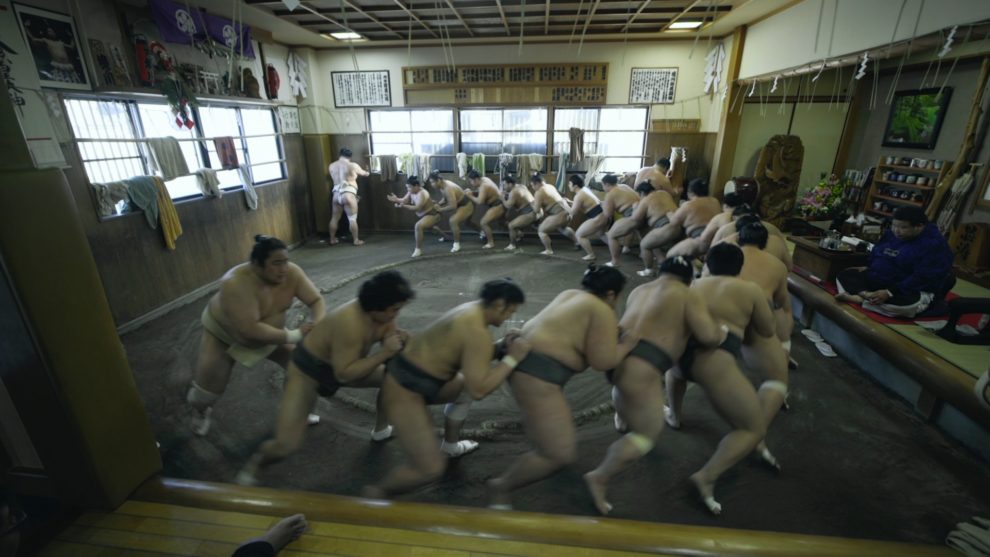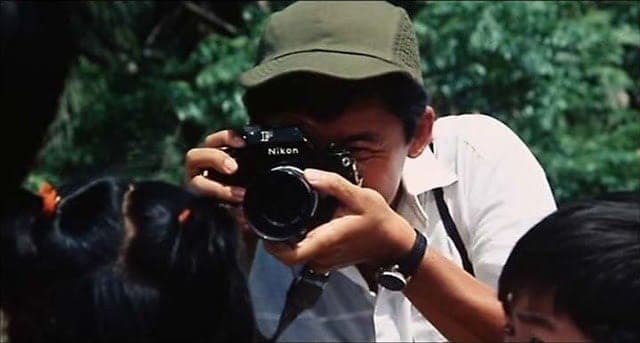Sumo is one of the most widely recognized, but also largely misunderstood Japanese sports. Eiji Sakata's full-length documentary debut “Sumodo: Successors of Samurai” aims to elucidate the intricacies of the sport and the sheer athleticism of its practitioners.
“Sumodo: Successors of Samurai” is screening at Toronto Japanese Film Festival

The movie follows two sumo stables, Takadagawa and Sakaigawa, in their preparation for two of Japan's biggest sumo tournaments in the first half of the year. We see the wrestlers train and witness the physical difficulties the top athletes from the two stables, Ryuden from Takadagawa stable and Goeido from Sakaigawa stable, go through in order to survive in the highly competitive and complicated world of high-level professional sumo.
Eiji Sakata spends the majority of his documentary on the sheer physical strength of his subjects. We see them exercising, clashing with one other, and exerting themselves physically both on the ring and out of it. On the other hand, no time is spent on their incredibly strong mental fortitude. As the director himself shows through the numerous practice scenes with many of the athletes from both stables, almost everyone can train their muscles and joints to become physically strong, but very few can do that with their minds to the level the top rikishi like Goeido and Ryuden. For both of them seem to completely disregard the corporeal in their strive to become the best. They discard broken bones, torn muscles, and dangerously high temperature as trifles that can't deter them from achieving their goals. It is exactly this mental fortitude, in our opinion, that makes them similar to the samurai, rather than the physical one.

Despite the physically demanding exercises, all the interviewed athletes and especially the two highest-ranking ones seem to be very happy-looking men. It's as if they have surpassed their own limitations as humans and have reached something like an enlightenment, again connecting them to the religious practices such as zazen meditation practiced by many of the samurai. Of course, we don't try to discredit any of the incredibly difficult physical exercises the athletes do on a daily basis. Covered in sweat, they face both one another and their own limitations, going against their own weaknesses in order to overcome them and become better sumo athletes in the process. Yet, we can't shake off the feeling that the bouts between the athletes are much more than clashes of pure strength, there is a lot of thought and technique put into them, two things the movie does not care to explain to us.
Structurally, “Sumodo: Successors of Samurai” reminds the viewer of two episodes of a documentary series spliced together with a short black screen interlude between them. This is exacerbated by the fact that narratively, they are largely the same too. Each of the parts introduces us to a new sumo stable and follows some of its members' training regimen in the months before a big tournament. Each of the arcs finishes separately from the other with the strongest athletes of each stable meeting in a match towards the end. And though the viewer is unsure whom to cheer for, the match proves somewhat minor in the ultimate scale of things, because it has almost no consequence on story arc of either wrestler.
Tonally, the documentary is all over the place too. While the majority of the practice scenes are shot in a somewhat sombre and quiet tone, helping us in a way experience the intensity and heft of the bouts, there are many other sequences that seem to make fun of the subjects of the film. The best examples here are the two scenes of sumo wrestlers eating, one from each part of the film. The music is very light, almost circus-like – light and playful – making the athletes look more like jokes than real fighters, nothing to say as the continuation of the samurai as the movie makes them out to be. Quite the opposite, it makes them look like jokes, as circus attractions which are only there for the viewers pleasure. This is in a big clash with the overall image of the fighters that the movie tries to create.
Though he does not explain to us a lot about the sumo as a sport and how it actually descends from the samurai, the director manages to make us root for the protagonists in both of the stories. Portrayed both as superhumans and as athletes that go beyond the corporeal through sheer mental fortitude, the viewer cannot but root for them when he witnesses them compete at the tournaments in the end of each part. This identification with the two men is so strong that when they eventually face each other towards the end, the viewer is somewhat confused for whom to cheer for. This emotional identification with the wrestlers is probably where the documentary excels most.
Despite all of its problems, “Sumodo: Successors of Samurai” is a very entertaining and at times gripping look at the lives of sumo athletes.















